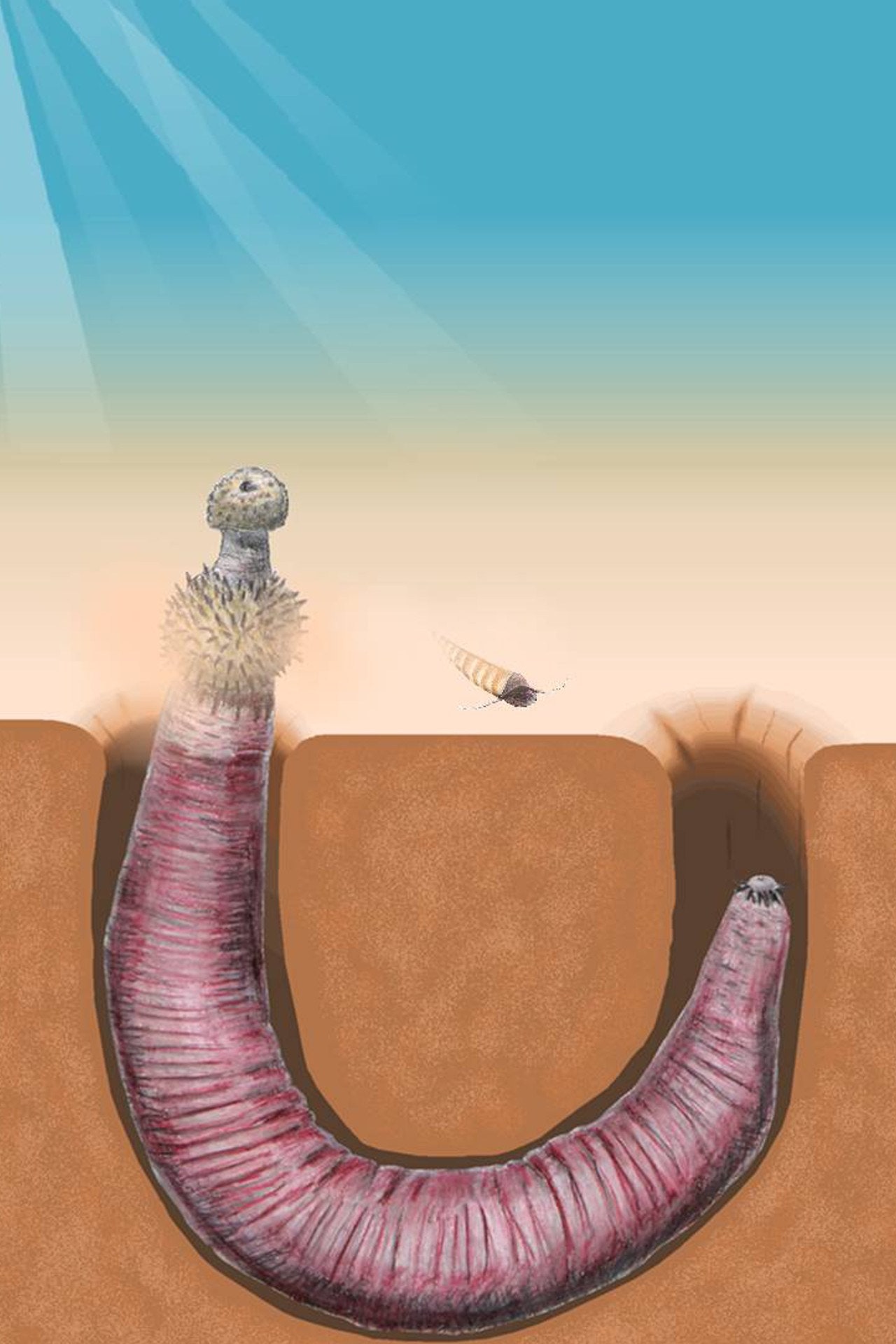Roughly 480 million years ago, a dazzling assortment of diverse flavors of life arose on Earth. There has long been speculation about what sparked this abundant radiation of new species, from asteroid dust or tectonic activity to a rise in atmospheric oxygen levels.
Now rocks from Maryland, USA, suggest an unlikely protagonist: prehistoric marine worms may have contributed significantly to the Great Ordovician Biodiversification Event.
“It’s really incredible to think how such small animals that don’t even exist today could have changed the course of evolutionary history in such a fundamental way,” says geobiologist Maya Gomes of Johns Hopkins University.
US scientists have found elevated levels of a mineral called pyrite in a certain level of sediment at nine sites in the Chesapeake Bay. Pyrite requires a steady supply of oxygen to form from sediment minerals, but it also readily reacts with oxygen, stealing it from the oceans and then the atmosphere.
But the more pyrite that forms and is then locked underground, the more oxygen concentrations can build up. It is a useful proxy to measure oxygen levels from the distant past.
“It’s kind of like Goldilocks,” explains Johns Hopkins paleoclimatologist Kalev Hantsoo. “The conditions have to be right. You have to stir a little to bring oxygen into the sediment, but not so much that the oxygen destroys all the pyrite and there’s no net build-up.”
The levels of pyrite observed in the sediment suggest that something was churning the ocean floor in such a way that it prevented the mineral from stealing back too much of the rising oxygen levels.
Hantsoo and colleagues strongly suspect that these early mixers of ocean sediments were worms that burrowed along with other creatures interacting with the sea floor.
“We hypothesize that pyrite burial… increased during the protracted onset of bioturbation,” the researchers explain in their paper.

Worms and other underground life continue to play a huge role in bioturbation today—physically mixing the topsoil, allowing fluid and oxygen exchange and the cycling of other important nutrients, including iron, sulfur, and carbon dioxide.
The scientists updated previous models of prehistoric oxygen levels with their measurements of bioturbation. The results suggest that oxygen levels remained stable for millions of years until they rose sharply during the Cambrian (beginning 538.8 million years ago) and Ordovician periods. These increases were greater than previous reconstructions suggested, but they could not last indefinitely.
“This increase in pyrite burial efficiency would be temporary as bioturbation intensifies in line with the increase [concentrations of O2]would eventually introduce enough oxidizing power into the sediment pile to suppress pyrite retention,” Hantsoo and team write.
It was not until the second detected pyrite burial explosion, during the Ordovician, 485–445 million years ago, that Earth reached and then maintained near-modern oxygen levels. This coincided with a 30 million year period of rapid evolutionary change that led to the creation of countless new species.
“There’s always been a question of how oxygen levels relate to moments in history when evolutionary forces are growing and you see a greater diversity of life on the planet,” says Gomes.
“With this work, we will be able to explore the chemistry of the early oceans and reinterpret parts of the geological record.”
These bursts of oxygen, aided by the burrowing worms, appear to have aided a spectacular boom in the diversity of life on Earth.
This research was published in Geochimica et Cosmochimica Acta.